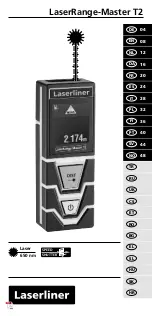
The information about the tuned frequency or channel appears at the bottom of the screen.
If the equipment is in frequency mode, the central frequency of the spectrum will appear. If we
turn the rotating knob, we can change the central frequency, in other words, we move the
spectrum to one side or the other.
If the equipment is in channel tuning mode and in analogue mode, the channel with the tuned
frequency will appear and the spectrum will automatically be centred on the frequency of the
video carrier of this channel. In digital mode, it is positioned in the centre of the channel. If we
turn the rotating knob while in channel mode, we will pass onto the next channel and the
spectrum will go to the next video carrier.
The corresponding submenu is the following:
Figure 93.-
Spectrum mode options
3.3.4.1.- Reference Level
This allows you to select the reference level of the spectrum in order to optimize the view of the
spectrum of the signal according to its level. The reference level corresponds to the value of the
upper horizontal line of the spectrum. The possible values are from 60 dBµV to 130 dBµV in
steps of 10 for the terrestrial band, and up to 120 dBµV in the satellite band. When this function
is chosen, the infomation about the level disappears for a moment and reference level options
appear in its place. These are all viewed by turning the rotating knob. When it is pressed, the
value is selected. Then the reference level information disappears and the signal level
information re-appears. Any changes in this value can be seen on the spectrum. This makes it
easier to know which reference level value is the best for the optimum viewing of the spectrum.
3.3.4.4
3.3.4.5
3.3.4.6
3.3.4.1
3.3.4.2
3.3.4.3
Multimetter FSM 500
Ref. 5903
78
















































